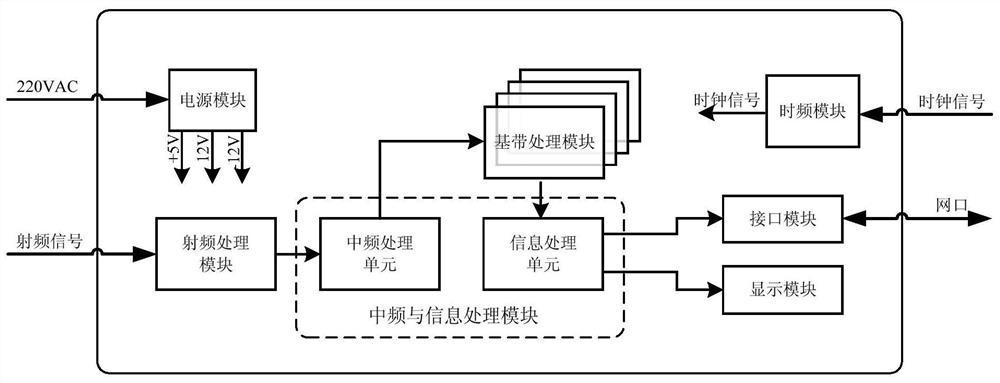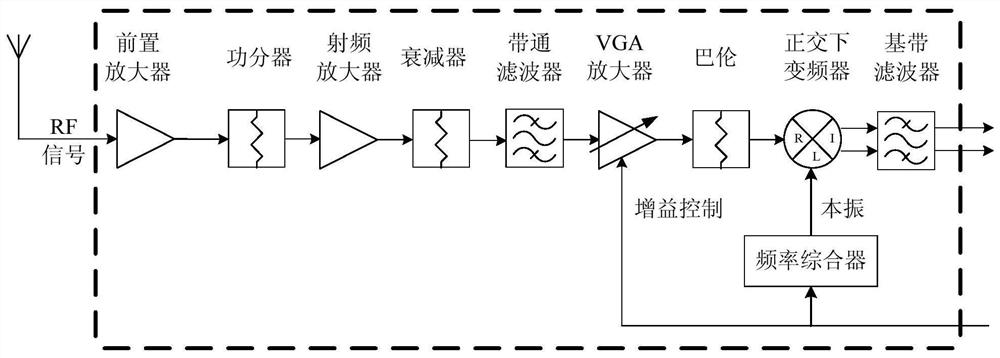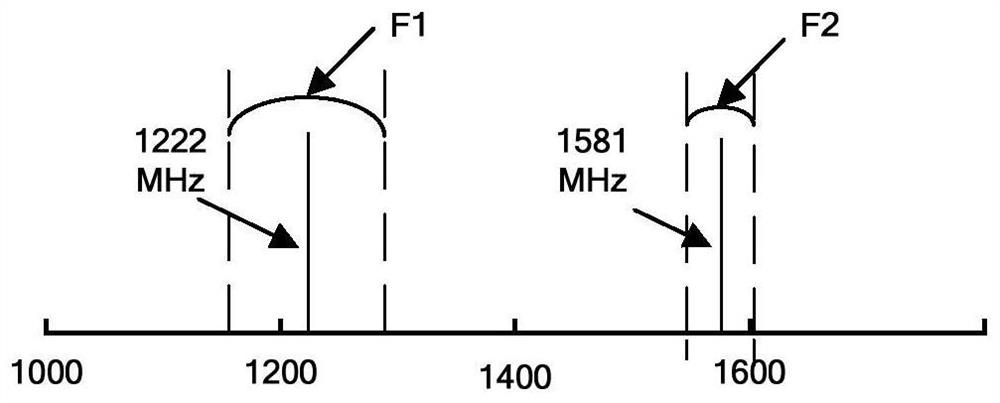A device suitable for monitoring and receiving multi-system navigation signals
A navigation signal and multi-system technology, which is applied in the field of multi-system navigation signal monitoring and receiving devices, can solve the problems of unsatisfactory requirements, navigation signal monitoring and receiving device volume, complexity, and power consumption increase, and achieve low power consumption and strong Scalability, Small Effects
- Summary
- Abstract
- Description
- Claims
- Application Information
AI Technical Summary
Problems solved by technology
Method used
Image
Examples
Embodiment Construction
[0030] The present invention will be further described below in conjunction with the accompanying drawings.
[0031] The satellite navigation receiving device of the present invention is integrated in a 2U chassis, and can simultaneously receive 28 Beidou global satellite civil signals (comprising B1I, B1C, B2I, B2a / b, B3I, B3C), 18 GPS satellite civil signals (comprising L1C / A, L1C, L2C, L2P, L5), 15 GLONASS satellite civil signals (including G1C / A, G2C / A, G3OC) and 15 Galileo satellite civil signals (including E1B / C, E5a, E5b), a total of 826 Independent receiving channel.
[0032] The device of the present invention adopts modular design, such as figure 1 As shown, the device suitable for monitoring and receiving multi-system navigation information includes a radio frequency processing module, an intermediate frequency and information processing module, a baseband processing module, an interface module, a display module, a power module, and a time-frequency module. The cor...
PUM
 Login to View More
Login to View More Abstract
Description
Claims
Application Information
 Login to View More
Login to View More - R&D
- Intellectual Property
- Life Sciences
- Materials
- Tech Scout
- Unparalleled Data Quality
- Higher Quality Content
- 60% Fewer Hallucinations
Browse by: Latest US Patents, China's latest patents, Technical Efficacy Thesaurus, Application Domain, Technology Topic, Popular Technical Reports.
© 2025 PatSnap. All rights reserved.Legal|Privacy policy|Modern Slavery Act Transparency Statement|Sitemap|About US| Contact US: help@patsnap.com



